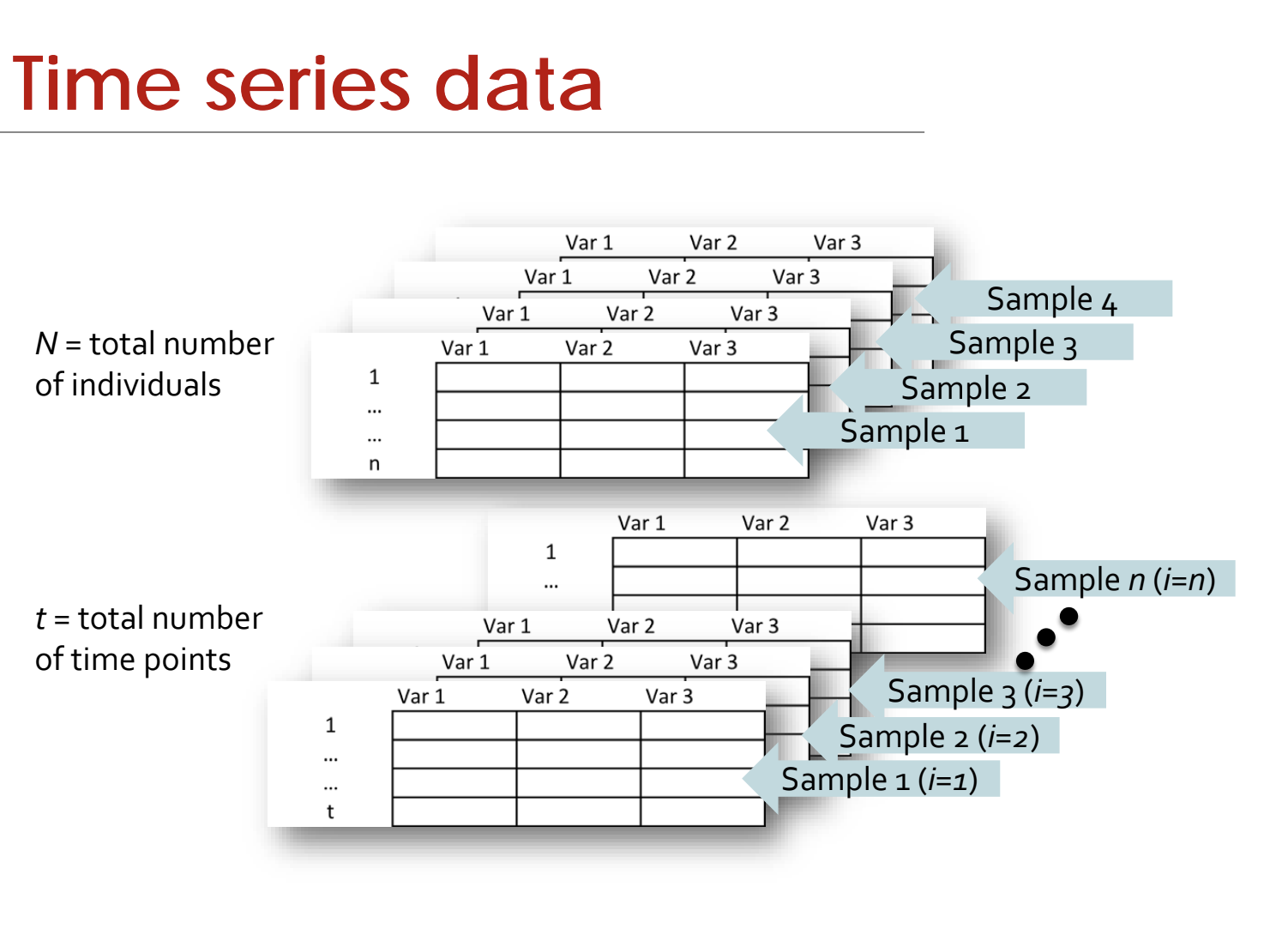GIMME Tutorial #1: Which Data to Analyze
Overview
GIMME is designed to analyze covariation between variables over time. This means that GIMME requires time-series data - in other words, variables that have been measured at regular intervals over a period of time. For example, measuring someone’s heart rate and breathing rate each minute for an hour would result in a time-series, and you could measure that individual’s self-reported anxiety every minute as well. In this simple example, you could measure the covariation between the variables, and within the same variable over time.
To summarize, the data must:
Be a time-series;
Be measured at regular intervals.
The data must NOT:
Be a constant, such as a mean, peak, or any other point estimate.
Examples
Some examples of data that are compatible with GIMME are:
Recording one’s scores at the end of the day on subjective scales at regular intervals, such as in a diary or a mobile app;
The brain activity from a resting-state fMRI dataset measured every second;
Measurements of heart rate from an actigraph every 2 hours.
Each of these examples has a different time scale, but they are all measured at regular intervals. The data can come from any source, as long as it meets that requirement.
Data Format
To use your data with GIMME, it must be in a specific format. Each individual can have 3 to 20 variables, and each variable must be measured at multiple time points. This results in an n x p matrix, in which n represents the number of variables, and p represents the number of time points for that particular variable.
For example, say that we have three variables: self-reported measures of anxiety, happiness, and boredom. Each of these are measured every minute for ten minutes. This would give us a 3x10 matrix, with the columns representing anxiety, happiness, and boredom, and the rows representing what the measurement was at the particular timepoint for each variable.

Figure created by Adriene Beltz & Peter Molenaar